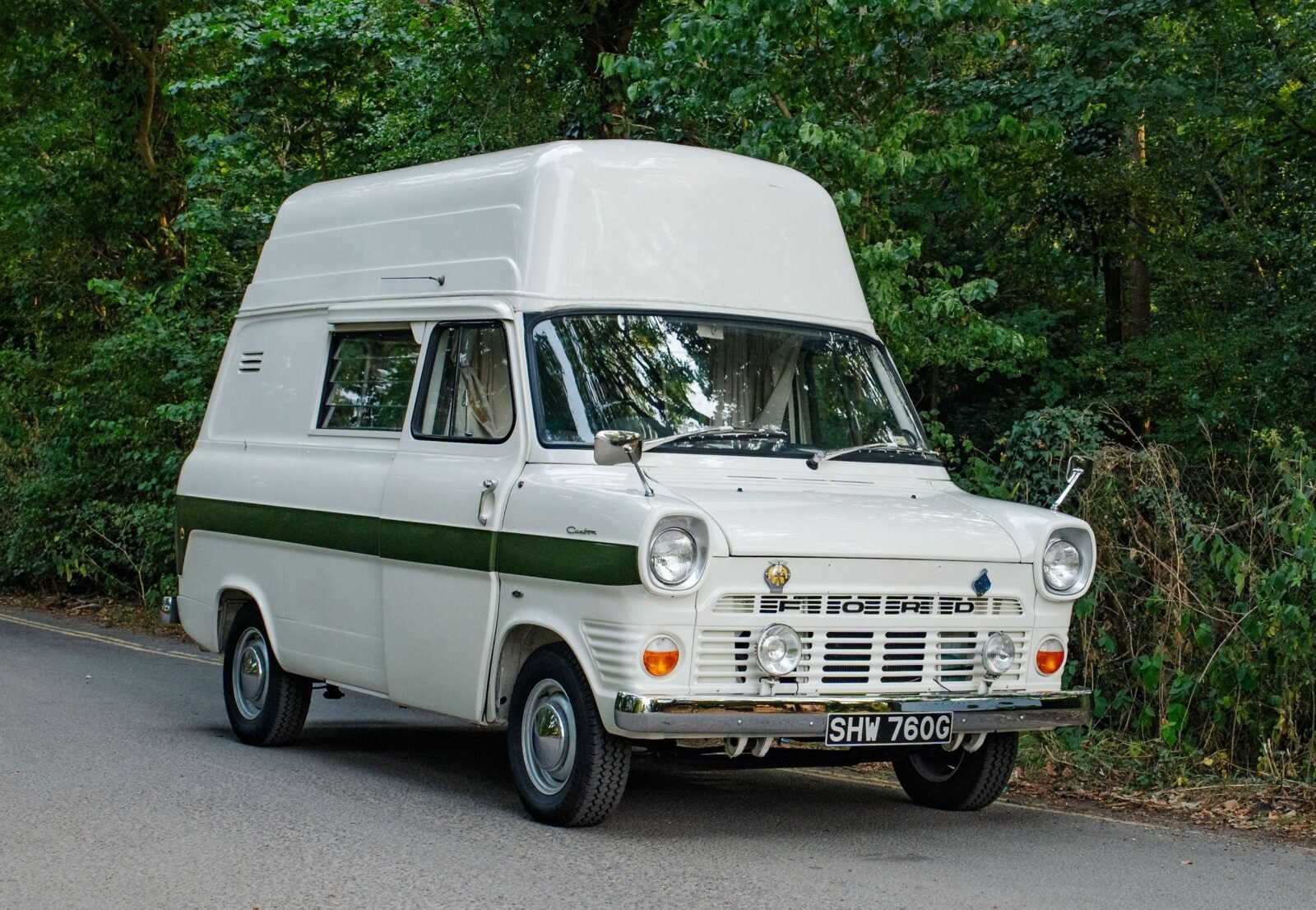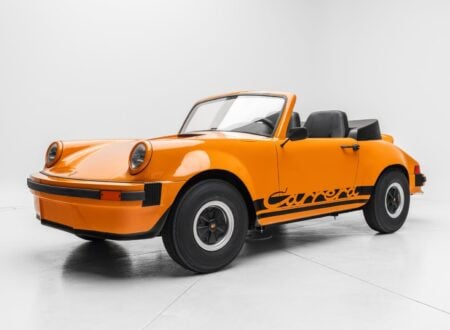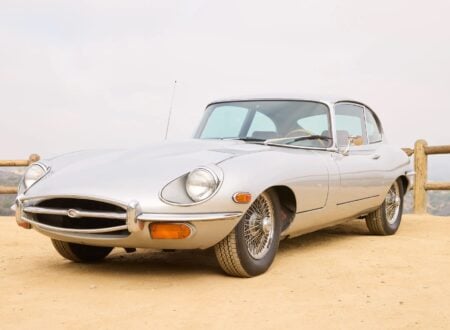This is a 1969 Ford Transit Camper Van that now benefits from a full restoration back to as-new condition. It’s been finished in a Lotus Cortina livery and it has comfortable accommodations for two in the rear.
The first generation Ford Transit became an icon in Britain, and one of the most ubiquitous commercial vehicles on the streets of the UK. A small number were converted into camper vans, and only a fraction of these have survived to the modern day.
Fast Facts – A Ford Transit Camper Van
- This 1969 Ford Transit Camper Van has undergone a full restoration to as-new condition and is now finished in a Lotus Cortina livery. It provides comfortable accommodations for two, making it an ideal choice for couples (or singles) looking for a weekend getaway vehicle with classic styling, with some modern updates.
- The first-generation Ford Transit debuted in 1965 as a larger and more powerful replacement for the Ford Thames 400E. It became a British icon, widely used by tradesmen and it was famously favored by bank robbers. Over 8 million units were sold across four generations, with various body styles and engine options.
- The Ford Transit quickly became a popular platform for camper conversions, with numerous companies adapting the van into recreational vehicles. The Mark I Transit continued production until 1977, and it remains a beloved classic, especially in camper van form.
- This 1969 Transit Camper Van has been carefully restored, featuring original fittings like a TV, full carpets, and wood work. It includes period-correct finishes, such as period-correct wood paneling and curtains, and offers a comfortable living area with a convertible double bed. It will be auctioned with an estimated value of £14,000 – £18,000.
The Ford Transit
The Ford Transit debuted in 1965 it had been developed as a blank slate replacement for the earlier, and smaller, Ford Thames 400E van. The Transit was both larger and more powerful, with a distinctive pug-nosed front end. Its unusual looks so endeared it to a generation of tradesmen, and it would become one of the best selling vans ever made – with over 8 million sold so far over four generations.
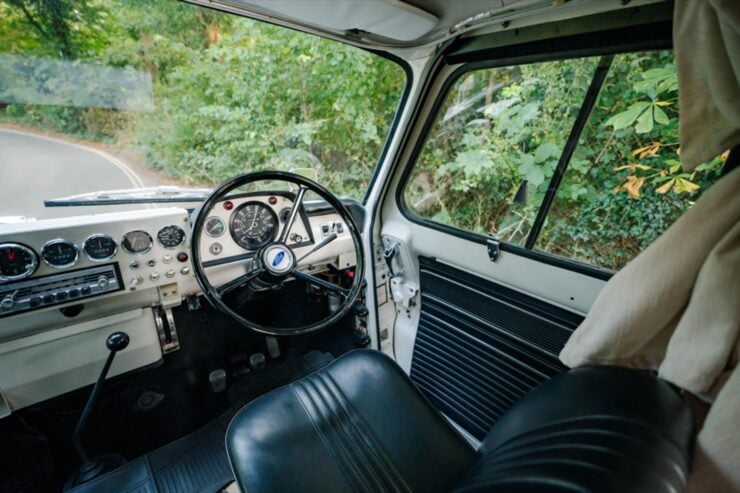

When production of the Transit first began in October of 1965 it was being built at the Langley factory facility in Berkshire, a town in southern England about an hour east of London. This was the same facility that had been producing the wildly-successful Hawker Hurricane fighter plane during WWII.
It seems some of the Hurricane’s spirit lived on in the Transit – it was soon selling in numbers far higher than the facility could manage and production was moved to Southampton.
Over the course of the 1965 to 1977 production run the Mark I Transit was offered with a number of engine options, including the popular Ford Taunus V4, the Essex V6, an Australian Ford Falcon 3.3 liter straight-six, and two diesel inline-fours.
By far the most common variant was the Taunus V4-powered model, which offered surprisingly good performance (when the rear was empty) thanks to its wide track and car-like handling. Some even claimed the Transit could outperform popular sports cars of the day like the MGB, though not the V8 version of course.
The performance of the Transit wasn’t lost on the British criminal community, who soon put it to work in a spate of bank robberies, essentially replacing the earlier Jaguar Mk2 “Gentleman’s Express”as their preferred getaway car.
Ford of Europe would release the first generation Transit in a variety of body variants, these included long and short wheelbase versions, panel vans, pick-up truck, passenger minibuses, and crew-cabs. Many caravan and camper van companies also turned their hands to producing camper van versions of the Transit, many of which are still in regular use today.
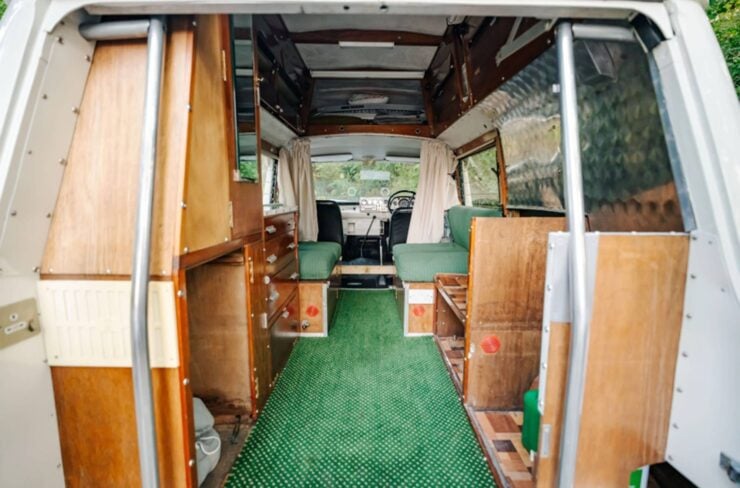

The Mark I Transit was replaced with the Mark II in mid-1977. It shared a clear stylistic link with its forebear but was considerably modernized, though it never quite became the same cultural icon as the first model.
The Ford Transit Camper Van Shown Here
The 1969 Ford Transit Camper Van you see here has been given a comprehensive, award-winning restoration. It’s finished in an eye-catching Lotus Cortina colourway which will be popular with enthusiasts, and it’s fitted with rare original fittings including TV, carpets, and utensils.
This van is said to have seen fewer than 60,000 miles since new, and the listing notes that it’s had £1,000 of recent servicing and maintenance completed. It rides on original steel wheels with chrome hubcaps, and it has sliding left and right doors.
The rear doors swing open to show a well-appointed camper area with period-correct finishings including wood paneling, curtains, counter and storage space, and a pair of green couches that can be converted into a double bed.
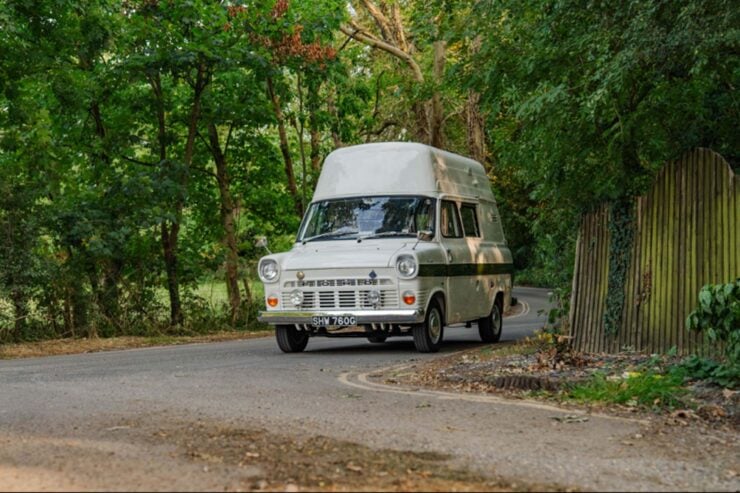

The extended roof offers good headroom and plenty of extra storage space, and the vehicle has its own battery array and power outlets for running appliances. This camper van is ideally set up for couples to take it away for weekend adventures in the UK or across the Channel in Europe for more extended trips.
It’s now due to roll across the auction block with H&H Auctions on the 9th of April, and it’s being offered with a price guide of £14,000 – £18,000, or approximately $17,500 – $22,500 USD. If you’d like to read more or register to bid you can visit the listing here.
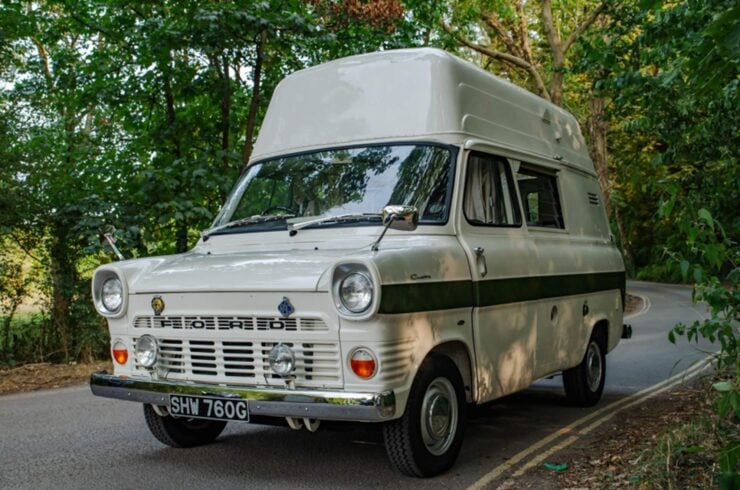
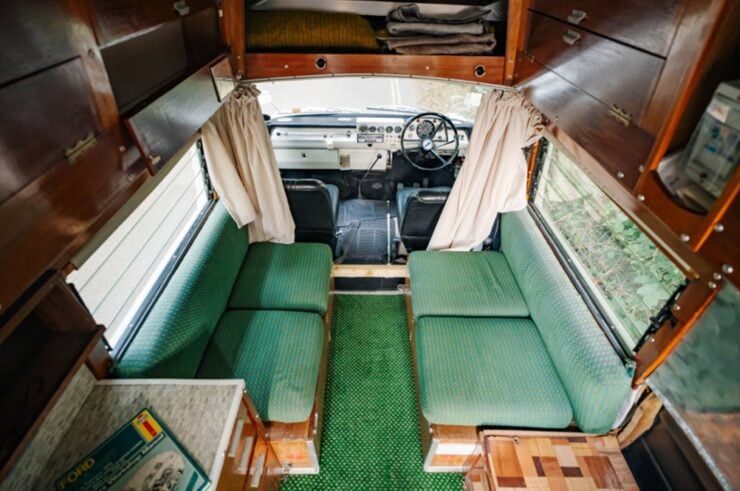
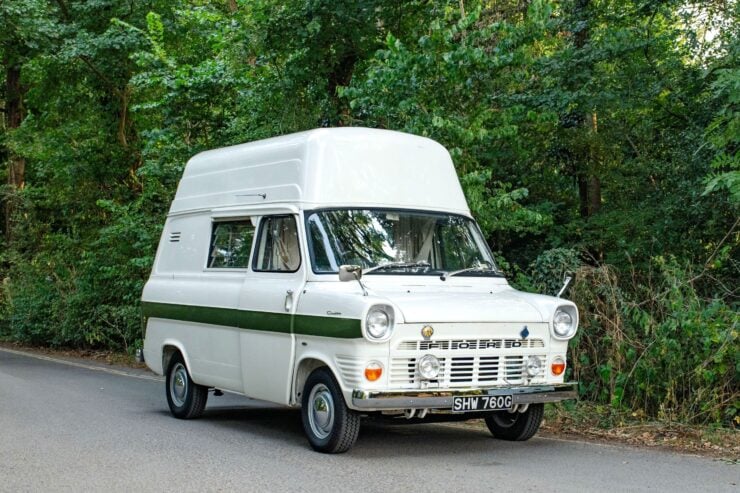
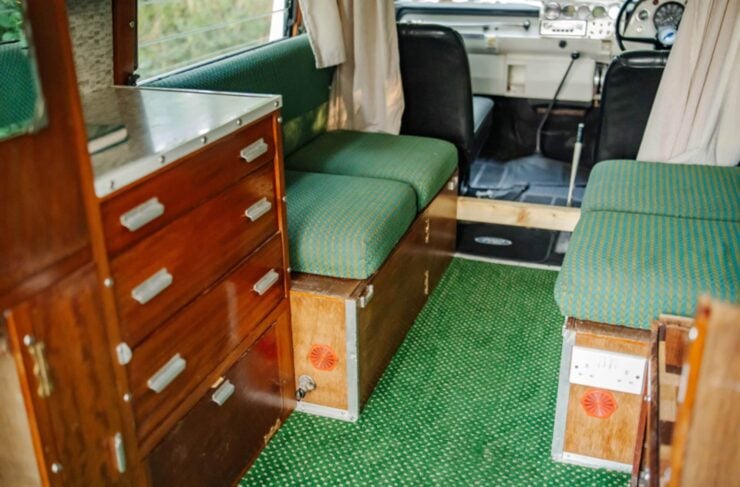

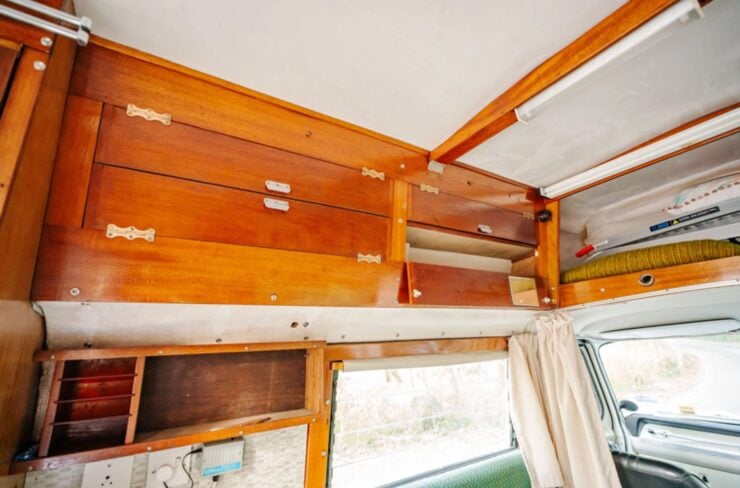
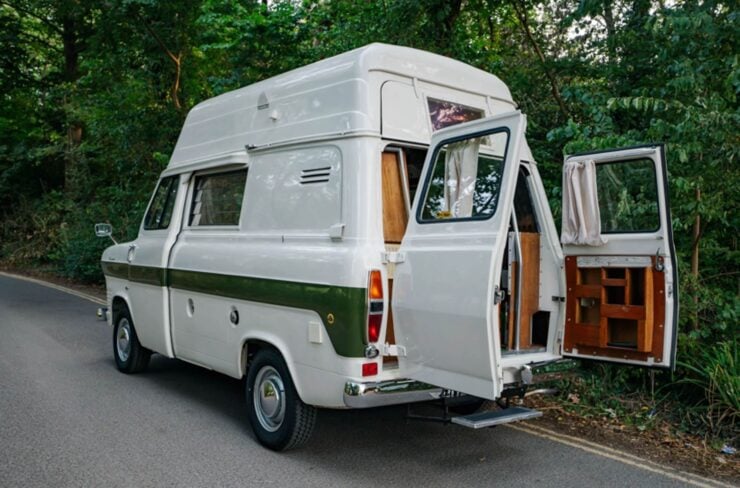
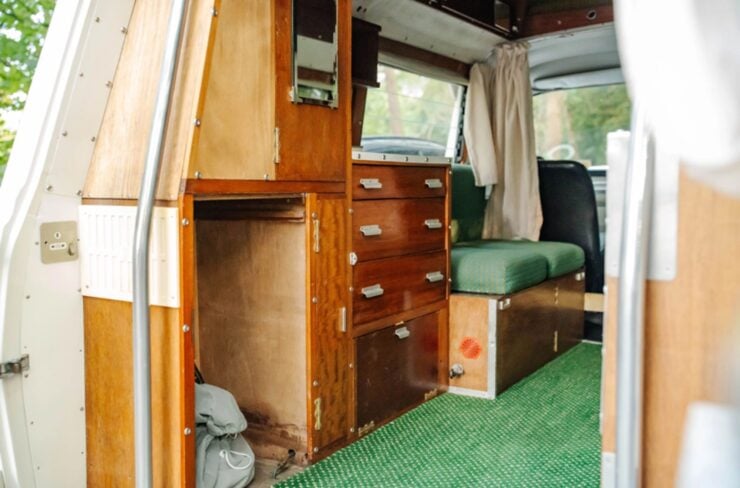
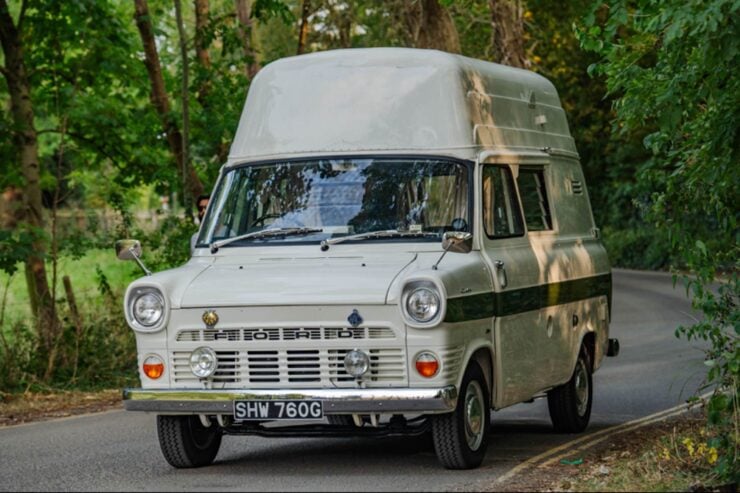
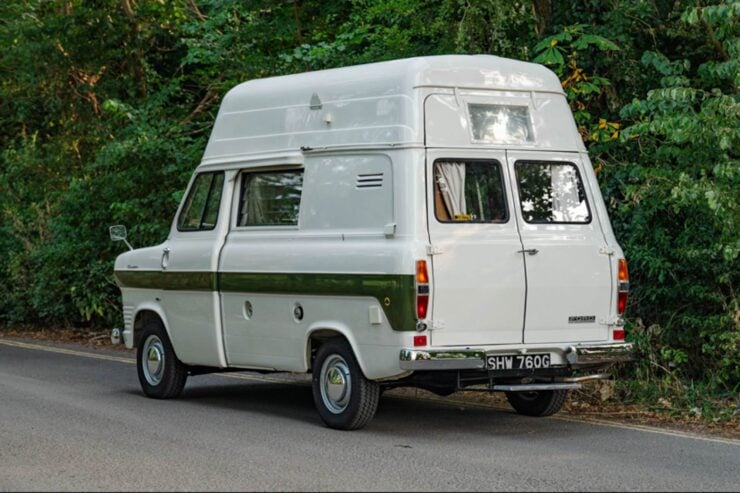
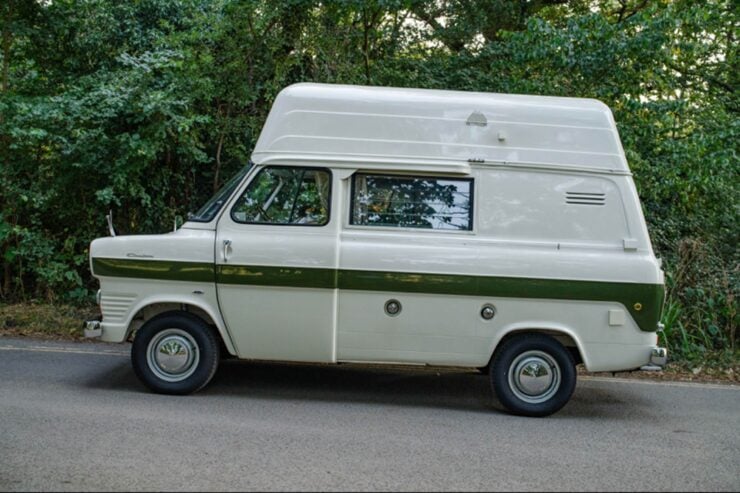
Images courtesy of H&H Auctions

